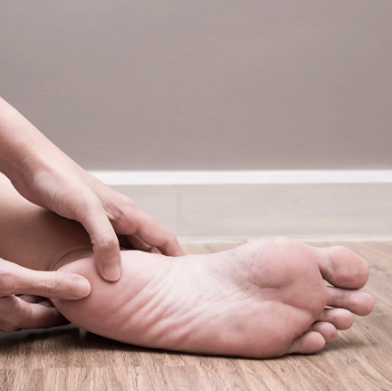What you need to know about Plantar Fasciitis
Contents
Plantar fasciitis is a condition in which the plantar fascia is inflamed. The plantar fascia is a thick ligament located across the bottom of your foot. It connects your toe with your heel bone. This condition is one of the most common orthopedic complaints and it causes pain at the bottom of your heel.
There are several types of treatment available to treat plantar fasciitis, including therapy, surgery, and other procedures. Your doctor will be able to determine the best type of treatment for you.

What does the Procedure Involve?
Physical therapy
Physical therapy is a key treatment for plantar fasciitis. During physical therapy, you will learn exercises to stretch your plantar fascia and strengthen your lower leg muscles, which will help stabilize your walking and lessen the workload on your plantar fascia. Your physical therapist may also use contrast baths, massage, or ultrasonography to help with your long-term healing.
Steroid injections
Your doctor may recommend steroid injections to relieve your pain temporarily, usually for about a month. It will also keep your inflammation down. The steroid medication is normally injected into the tender area or the most painful area of your plantar fascia. However, multiple shots are not recommended as they can weaken your plantar fascia, which can cause it to rupture.
Extracorporeal shock wave therapy
If physical therapy and other methods are not working, your doctor may suggest you undergo extracorporeal shock wave therapy. During this procedure, your doctor directs sound waves to the area of the heel where you experience pain to stimulate healing within the ligament. The sound waves literally “shock” your plantar fascia, which may reduce the pain you experience.
Surgery
Surgery is only performed where other methods have not worked, your pain is severe, or your pain lasts more than 6 to 12 months. There are two types of surgery that can be performed to treat plantar fasciitis:
-
Plantar fascia release involves partially detaching your plantar fascia from the heel bone to release tension and relieve inflammation.
-
Gastrocnemius recession is done to lengthen your calf muscle to release stress on the plantar fascia and increase your ankle motion. This procedure is typically recommended if you find it hard to flex your feet even though you consistently stretch.
How Long Should I Stay at my Destination?
Your length of stay depends on the type of treatment you underwent. For non-surgical treatments, you should be able to leave the area within 3 to 5 days. For surgical treatments, you may need to stay in the country for 7 days. For physical therapy, your length of stay depends on the frequency and how many appointments are needed. Your doctor/physical therapist/medical travel team will be able to advise you on this.
What’s the Recovery Time?
The recovery time will vary from person to person, depending on the severity of your condition and the type of treatment you have. With most types of treatments, you can go back to your normal routine within 1-2 weeks. With surgical procedures, you may need to wait for 3 to 6 weeks until you can go back to your normal routine. Whether you have a non-surgical or surgical procedure, it is important to increase the intensity and time of your activities gradually.
What About Aftercare?
After all types of plantar fasciitis treatment, your doctor will give you instructions that you need to follow. These may include medications to take, diet plan to follow, exercises you can do, restrictions, and wound care (for surgical procedures).
After you have fully recovered, it is important that you maintain a healthy weight and you should also try to do low-impact exercises. It is also important that you wear shoes that fit well and support your arch.
What’s the Success Rate?
Most types of plantar fasciitis treatment are generally effective and safe. However, extracorporeal shock wave therapy has not been shown to be consistently effective. Plantar fasciitis treatment, with the exception of physical therapy, carries some risks and side effects, such as nerve problems, neuroma, recurring heel pain, infection, chronic pain, bruises, numbness, and swelling.
Are there Alternatives to Plantar Fasciitis Procedure?
In cases where your plantar fasciitis is not severe, you may be able to take pain relievers, such as ibuprofen and naproxen sodium, to ease your pain and inflammation. Your doctor may also recommend night splints or orthotics as the alternative. Night splints are used to stretch your calf and the arch of your foot while you sleep. Orthotics are custom-fitted arch supports that can help distribute pressure to your feet more evenly.
For an in-depth analysis of a Plantar Fasciitis Procedure, watch this short video.
To check prices or to book a Plantar Fasciitis Procedure, in Thailand or anywhere else in the world, head on over to MyMediTravel now!

